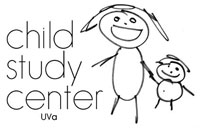
Vol. IV, No. 5, August/September 2005
- How young children perceive symbols in their environment
- The Children's Environmental Health Network
- The bigger the serving, the more children eat
- Childcare facilities' national loan resource update
- Richard Louv's Last Child in the Woods: Saving Our Children from Nature-Deficit Disorder
- Kresge Foundation funds 'green' childcare buildings
- Free classroom acoustic standards available
- 2006 Early Childhood Facilities Design Institute schedule
- Recent professional development
- Current projects
How young children perceive symbols in their environment
 The
August 2005 issue of Scientific American included an extensive
article, "Mindful of Symbols," on the use of symbols by children
30-months and younger. The author, Judy S. DeLoache, has concluded that
young children have difficulty grasping the process of thinking symbolically.
They mistake photographed objects for the real thing, for example, and
treat small toys as if they are much larger. The article explained that
grasping the meaning of a symbol entails dual representation and that
children are capable of this only when they can see an object -- both
as itself and as depicting something else. These conclusions could have
implications in the infant/toddler classroom, where we bombard children
with visual images, often at the wrong scale.
The
August 2005 issue of Scientific American included an extensive
article, "Mindful of Symbols," on the use of symbols by children
30-months and younger. The author, Judy S. DeLoache, has concluded that
young children have difficulty grasping the process of thinking symbolically.
They mistake photographed objects for the real thing, for example, and
treat small toys as if they are much larger. The article explained that
grasping the meaning of a symbol entails dual representation and that
children are capable of this only when they can see an object -- both
as itself and as depicting something else. These conclusions could have
implications in the infant/toddler classroom, where we bombard children
with visual images, often at the wrong scale.
 The
study cited in the article was conducted at the Child Study Center
of the University of Virginia, where researchers investigate the
development of infants and young children. Most of the research focuses
on early cognitive development and how young children begin to master
the many symbols that are so important for thought and communication with
others.
The
study cited in the article was conducted at the Child Study Center
of the University of Virginia, where researchers investigate the
development of infants and young children. Most of the research focuses
on early cognitive development and how young children begin to master
the many symbols that are so important for thought and communication with
others.
The original Scientific American story article be found here. For more about the Child Study Center of the University of Virginia's research and to see video clips of children in the research study, go to:
www.faculty.virginia.edu/childstudycenter/researchprojects.html
Vol. IV, No. 5, August/September 2005
- How young children perceive symbols in their environment
- The Children's Environmental Health Network
- The bigger the serving, the more children eat
- Childcare facilities' national loan resource update
- Richard Louv's Last Child in the Woods: Saving Our Children from Nature-Deficit Disorder
- Kresge Foundation funds 'green' childcare buildings
- Free classroom acoustic standards available
- 2006 Early Childhood Facilities Design Institute schedule
- Recent professional development
- Current projects

